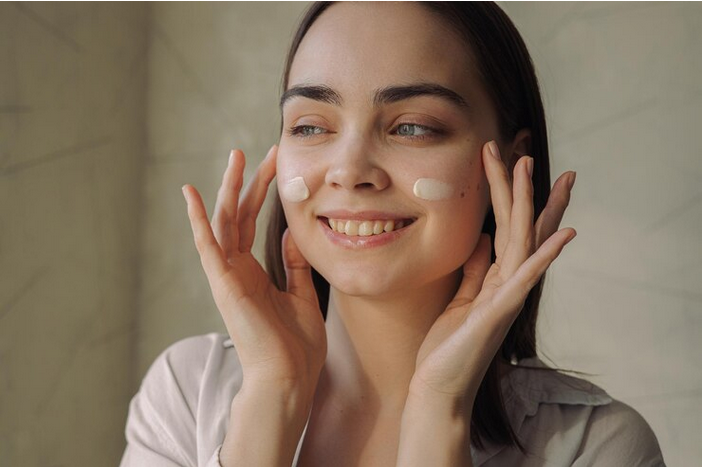Melasma is a skin condition characterized by the appearance of dark, discolored patches, often found on the face, particularly on the cheeks, forehead, nose, and chin. This condition primarily affects women, especially during hormonal changes such as pregnancy or when taking birth control pills. While melasma is not harmful, it can affect one’s self-esteem and overall skin appearance, prompting many to seek effective treatments. Among the most popular solutions are topical creams specifically designed to target hyperpigmentation. Understanding the different types of creams available can empower individuals to make informed choices about their skincare routine.
Table of Contents
ToggleUnderstanding Melasma: Causes and Symptoms
Before diving into the various creams available, it’s crucial to comprehend the underlying factors that contribute to melasma. This condition is primarily driven by an overproduction of melanin, the pigment responsible for skin color. Hormonal changes play a significant role, which is why melasma is often referred to as the “mask of pregnancy.” Sun exposure is another critical factor; ultraviolet (UV) rays can exacerbate melasma, prompting the skin to produce more melanin as a defense mechanism. Additionally, certain medications, cosmetic products, and even genetics can influence the development of melasma.
The symptoms of melasma are fairly straightforward, with the most notable being the presence of brown or gray-brown patches on the skin. These patches may vary in size and can appear symmetrically on the face. While melasma is not physically painful, its visual impact can lead to feelings of self-consciousness, leading many to seek out creams that can help lighten these spots effectively.
Types of Creams for Melasma: An Overview
When it comes to treating melasma, various types of creams contain active ingredients that target hyperpigmentation. Each category of cream works differently, and understanding these distinctions can help individuals choose the right product for their needs.
Hydroquinone Creams
Hydroquinone is one of the most popular ingredients for treating melasma due to its powerful skin-lightening properties. This cream works by inhibiting the enzyme tyrosinase, which is essential for melanin production. Hydroquinone is available in both over-the-counter and prescription-strength formulations. While effective, it is essential to use hydroquinone under a dermatologist’s supervision, as prolonged use can lead to skin irritation or a condition known as ochronosis, where the skin turns a bluish-black color.
For those seeking results, hydroquinone cream for melasma can take several weeks to show improvements. Users should be diligent in applying sunscreen daily, as hydroquinone can make the skin more sensitive to sunlight, potentially worsening melasma if proper precautions are not taken.
Retinoid Creams
Retinoids, derived from vitamin A, are another effective option for treating melasma. These creams work by promoting cell turnover, which helps to fade dark spots and even out skin tone. Retinoids also improve skin texture and reduce the appearance of fine lines and wrinkles. Prescription-strength retinoids, such as tretinoin, are often recommended for more severe melasma cases, while over-the-counter options containing retinol can also provide benefits, albeit more gradually.
It’s important to note that retinoids can cause initial irritation, redness, and peeling as the skin adjusts to the treatment. Therefore, users are encouraged to start with a lower concentration and gradually increase usage as the skin becomes more tolerant. Consistent use over several months is necessary to achieve noticeable results.
Azelaic Acid Creams
Azelaic acid is a lesser-known but highly effective ingredient for treating melasma. It works by inhibiting the enzyme tyrosinase as well, similar to hydroquinone, but has the added benefit of reducing inflammation and preventing clogged pores. This dual action makes azelaic acid an excellent choice for individuals who experience both melasma and acne.
Azelaic acid is typically well-tolerated, with fewer side effects than other treatments. Creams containing this ingredient are available in both prescription and over-the-counter formulations, making it accessible for many individuals. Users can expect to see improvements in skin tone and texture over time, with consistent use being key to achieving desired results.
Kojic Acid Creams
Kojic acid is another popular ingredient known for its skin-lightening properties. Derived from fungi, it works similarly to hydroquinone by inhibiting melanin production. Kojic acid creams are often used for treating hyperpigmentation, including melasma, and are available in various concentrations.
While kojic acid can be effective, it may cause some skin irritation for sensitive individuals. Therefore, it’s advisable to conduct a patch test before regular use. Users may experience a gradual lightening of dark patches, and as with other treatments, sun protection is essential to prevent the worsening of melasma.
Vitamin C Creams
Vitamin C is renowned for its antioxidant properties, but it also plays a significant role in skin brightening. Creams containing vitamin C help to inhibit melanin production while providing a brightening effect that can improve overall skin tone. Additionally, vitamin C helps to protect the skin from environmental damage, making it a multifunctional ingredient.
Unlike some other treatments, vitamin C creams are generally well-tolerated, making them suitable for all skin types. Users can incorporate vitamin C into their skincare routine without experiencing the irritation associated with stronger agents. For optimal results, it is advisable to use vitamin C in conjunction with sunscreen, as it can enhance the skin’s defense against UV rays.
Lifestyle Considerations for Managing Melasma
While topical creams play a vital role in treating melasma, lifestyle changes can also significantly influence the condition’s progression. One of the most crucial aspects to consider is sun protection. Daily use of a broad-spectrum sunscreen with an SPF of 30 or higher is essential, as UV exposure can trigger and worsen melasma. Wearing hats and seeking shade during peak sun hours can further safeguard the skin.
In addition to sun protection, incorporating a well-balanced diet rich in antioxidants can support skin health. Foods such as berries, leafy greens, and fish provide nutrients that may help in reducing inflammation and promoting overall skin vitality. Staying hydrated is also crucial, as adequate water intake helps maintain skin elasticity and supports its natural healing processes.
Furthermore, individuals with melasma should be cautious when choosing cosmetic products. Opt for non-comedogenic and fragrance-free products to minimize the risk of irritation. Avoiding harsh exfoliants and chemical peels during flare-ups can also help protect the skin from further damage.
Conclusion: Choosing the Right Cream for You
In conclusion, melasma is a manageable skin condition that can be effectively treated with the right creams and lifestyle adjustments. From hydroquinone and retinoids to azelaic acid and vitamin C, a plethora of options exists for those seeking to diminish dark patches. It is essential to consult with a dermatologist to determine the most suitable treatment based on individual skin type and severity of melasma.
Consistency is key; results may take time, but with dedication and the right approach, individuals can achieve a more even skin tone and regain their confidence. Remember, protecting your skin from the sun and adopting a holistic skincare routine can complement the effects of your chosen cream, paving the way for healthier, more radiant skin.




